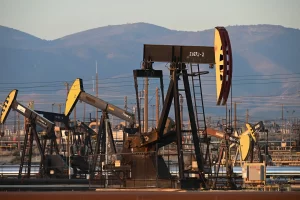Why Does America Not Extract Its Own Oil and Buy Oil from Other Countries?
Understanding why America continues to import oil despite having domestic production capabilities involves analyzing various economic, environmental, geopolitical, and strategic factors. This comprehensive overview delves into these aspects to shed light on the multi-faceted reasoning behind the US’s oil import strategy.
Understanding America’s Oil Import Strategy
America’s strategy for oil imports is deeply rooted in a complex interplay of economic rationale, geopolitical considerations, and environmental policies. Despite significant domestic production capabilities, the US imports oil to maintain economic balance, manage global relations, and ensure energy security. These imports provide a cushion against potential domestic resource depletion and energy shortages, enabling the country to stabilize its energy supply chain.
The policy decisions around oil imports are also influenced by fluctuating global oil prices. By importing oil when it is economically beneficial, the US can allocate more resources to other critical sectors. This strategic flexibility helps cushion the impacts of price volatility in the global oil markets, ensuring that domestic consumers and industries do not face sharp price hikes.
The Economics Behind Oil Imports in the US
The economic factors driving US oil imports primarily revolve around cost efficiency. It’s often cheaper to import oil than to extract it domestically due to higher production costs, including labor, technology, and regulatory compliance costs associated with domestic extraction. Additionally, some regions of the world have more accessible and abundant oil reserves, reducing the extraction costs significantly.
Another critical economic factor is the quality and type of crude oil. The US refineries are designed to handle a mix of crude grades. Often, importing certain types of crude oil can be more cost-effective than refining the domestically available types. This ensures that America’s oil refineries operate at optimal efficiency, ultimately reducing costs for consumers.
Why the US Relies on Foreign Oil Supplies
Reliance on foreign oil supplies provides the US with strategic diversification. By sourcing oil from various countries, America mitigates risks associated with potential supply disruptions, whether from natural disasters, geopolitical conflicts, or other unforeseen events. This diversification is crucial for maintaining a steady supply of oil, essential for the national economy and military readiness.
Moreover, international cooperation through oil imports fosters stronger diplomatic and trade relationships. These relationships are beneficial beyond just oil, facilitating broader economic and political collaboration. By maintaining good relations with oil-exporting nations, the US ensures a stable, reliable flow of this critical resource.
American Oil Production vs. Global Market Dynamics
American oil production is considerably influenced by global market dynamics. While the US is one of the largest oil producers, the global market’s interconnected nature means that domestic production levels are responsive to international supply and demand trends. Price fluctuations in the global market impact the profitability and viability of ramping up or scaling down domestic production.
Another aspect is the investment in infrastructure required to increase domestic oil production. Significant capital is necessary to explore, extract, and transport oil within the US. Global oil prices often make it more financially feasible to invest in international sources of crude oil, balancing the scales between domestic production and imports.
US Energy Policy: A Focus on Diversified Sources
US energy policy emphasizes diversification to ensure energy security and sustainability. This approach entails a balanced mix of oil imports, domestic production, and investment in alternative energy sources. By not relying solely on domestic oil production, the US hedges against risks associated with complete dependence on a single energy source.
Additionally, diversified energy sources support the transition towards renewable energy. As the US moves towards more sustainable energy solutions, maintaining a diversified portfolio allows for a smoother transition without severely impacting the economy or energy availability.
Environmental Concerns of Domestic Oil Extraction
Environmental considerations play a significant role in the decision to import oil rather than focus exclusively on domestic extraction. Extracting oil domestically poses substantial environmental risks, including habitat disruption, water contamination, and greenhouse gas emissions. These environmental impacts are subject to stringent regulatory frameworks that can increase production costs.
By balancing imported oil with domestic production, the US can manage the environmental footprint of its energy needs. Importing oil from countries with less stringent environmental regulations is a controversial but sometimes economically driven choice, though it shifts environmental impacts rather than eliminating them.
Geopolitical Factors Influencing US Oil Purchases
Geopolitical dynamics heavily influence America’s oil import strategies. The global oil market is often affected by political events and relations between oil-producing and oil-consuming nations. Strategic alliances and international policies can make certain foreign oil sources more attractive than domestic production.
Countries with stable political environments and good relations with the US are preferred sources for oil imports. Additionally, securing oil from regions with geopolitical importance can enhance America’s influence in those areas, reinforcing its strategic interests and diplomatic leverage.
Oil Refining Infrastructure and Its Global Connections
The US boasts a highly sophisticated and extensive oil refining infrastructure. This infrastructure is designed to process a specific mix of crude oils from around the world, which sometimes makes importing oil more practical than utilizing domestically produced oil. Importing oil ensures that refineries operate at peak efficiencies, reducing overall costs.
Furthermore, the integration of US refining infrastructure with the global oil supply chain enhances operational efficiencies. This interconnectedness facilitates smooth and reliable supply routes, helping to stabilize fuel prices and ensure a steady supply of refined petroleum products to meet domestic demand.
Cost Efficiency: Comparing Domestic and Imported Oil
Cost efficiency is a paramount factor when comparing domestic oil production with imports. Labor costs, regulatory compliance, and production technology investments often make domestic oil extraction more expensive than importing oil. The economic benefits extend to consumers, as lower costs of imported oil translate into more affordable fuel prices.
Additionally, global oil markets often present opportunities for the US to purchase oil at lower prices due to oversupply or geopolitical shifts. Taking advantage of these opportunities ensures a cost-effective strategy for maintaining the national oil supply.
Supply and Demand: Balancing Acts in the Oil Industry
Balancing supply and demand in the oil industry requires a careful blend of domestic production and oil imports. Domestic oil production is often aligned with demand levels to stabilize prices and avoid oversupply. However, imports serve as a crucial buffer, ensuring that oil shortages do not disrupt the national economy.
This balancing act is also influenced by seasonal variations and demand spikes. Oil imports can be adjusted more flexibly in response to these fluctuations than ramping up domestic production, offering a strategic advantage in managing the overall supply.
How Trade Agreements Impact US Oil Imports
Trade agreements significantly impact US oil imports by establishing favorable terms for purchasing oil from foreign sources. These agreements often include tariffs, trade barriers, and other regulatory frameworks that can influence the cost-effectiveness of oil imports.
By negotiating favorable trade agreements, the US can secure reliable and cost-effective oil supplies. These agreements also strengthen international relations, promoting broader economic cooperation and stability in the global market.
The Role of OPEC in America’s Oil Supply Chain
The Organization of the Petroleum Exporting Countries (OPEC) plays a crucial role in the global oil supply chain, including that of the US. OPEC’s production quotas and pricing strategies can influence global oil prices, affecting America’s import strategies. The US monitors OPEC’s actions closely to adapt its oil import policies accordingly.
Additionally, OPEC’s stability and production levels often impact the global market’s supply and demand dynamics. By aligning import strategies with OPEC’s market influence, the US can better manage its oil supply chain and maintain stable energy prices.

Strategic Reserves and Emergency Oil Supplies
America’s Strategic Petroleum Reserve (SPR) is a critical component of its energy security strategy. The SPR provides a buffer against significant supply disruptions, allowing the US to mitigate the impacts of geopolitical events, natural disasters, or other unforeseen disruptions in the oil supply chain.
By maintaining a strategic reserve, the US can rely on a combination of imports and domestic production to ensure energy stability. The SPR’s role is to address short-term disruptions, while regular imports and domestic production ensure long-term supply stability.
Technological Advancements in Oil Extraction and Import
Technological advancements have significantly enhanced both oil extraction and import processes. Innovations in extraction technologies, such as hydraulic fracturing and deep-water drilling, have increased domestic production capabilities. However, advancements in transportation and refining technologies have also made importing oil more efficient and cost-effective.
These technological advancements allow the US to maintain a balanced approach, optimizing both domestic production and imports. By leveraging technological progress, the US can ensure a resilient and flexible energy supply.
Economic Benefits of Importing Oil Over Domestic Production
Importing oil often presents several economic benefits over domestic production. Reduced extraction costs, fewer regulatory hurdles, and optimized refining processes contribute to these benefits. The savings from importing oil can be redirected towards other critical areas of the economy, fostering broader economic growth.
Moreover, importing oil supports the global economy by promoting international trade and cooperation. These economic benefits extend beyond the energy sector, influencing overall economic stability and growth.
Strategic Alliances and Oil Purchasing Agreements
Strategic alliances and oil purchasing agreements are essential for ensuring a stable and reliable oil supply. These agreements often include long-term contracts, favorable pricing terms, and mutually beneficial trade conditions. Such alliances strengthen diplomatic relations and promote broader economic cooperation.
By securing reliable sources of oil through strategic agreements, the US can enhance its energy security and mitigate the risks associated with supply disruptions. These alliances also bolster America’s geopolitical influence and strategic interests.
Impact of Domestic Production Regulations on Oil Policies
Regulatory frameworks governing domestic oil production significantly impact America’s oil policies. Environmental regulations, labor laws, and safety standards often increase the costs and complexities associated with domestic production. These regulatory hurdles make importing oil a more appealing option in certain contexts.
By navigating these regulations and balancing them with import strategies, the US can maintain a stable and cost-effective oil supply. The interplay between regulatory compliance and economic considerations shapes the broader oil policy landscape.
The Future of Renewable Energy and Its Influence on Oil Imports
The push towards renewable energy significantly influences America’s oil import strategies. As the US invests more in solar, wind, and other renewable sources, the reliance on oil—both domestic and imported—gradually decreases. However, the transition to renewable energy is gradual, requiring a balanced approach to ensure energy stability.
In the interim, oil imports continue to play a crucial role in meeting energy demands. By balancing investments in renewable energy with ongoing oil imports, the US can ensure a smooth transition while maintaining energy security.

Energy Independence: Myth vs. Reality
The concept of energy independence, while appealing, is complex and nuanced. Complete energy independence would entail total reliance on domestic energy sources, which is not always practical or beneficial. The interconnected nature of global energy markets means that some level of dependence on foreign oil is inevitable.
Energy independence is more about achieving a balanced and resilient energy supply that includes a mix of domestic production, imports, and renewable sources. This balanced approach ensures long-term energy stability and security.
Political Implications of America’s Oil Import Strategies
America’s oil import strategies have significant political implications both domestically and internationally. Domestically, these strategies impact policy decisions, environmental regulations, and economic priorities. Internationally, they influence diplomatic relations, trade agreements, and geopolitical dynamics.
By carefully managing its oil import strategies, the US can navigate the complex political landscape associated with energy security. These strategies support broader national interests, promoting economic stability and geopolitical influence.
Conclusion
America’s continued reliance on oil imports, despite having robust domestic production capabilities, is shaped by a confluence of factors including economic efficiency, environmental concerns, geopolitical strategies, and technological advancements. This multifaceted approach ensures a stable, cost-effective, and resilient energy supply, balancing domestic production with strategic imports to meet the nation’s energy demands. As the US transitions towards renewable energy, the blend of these strategies will evolve, but the underlying principles of diversification and balance will remain central to ensuring long-term energy security.







